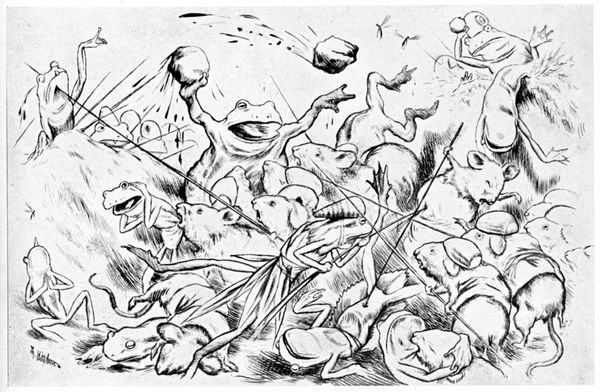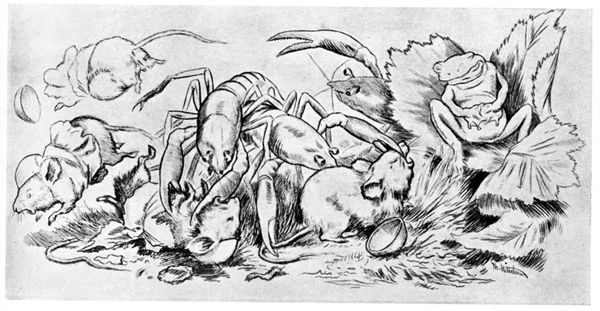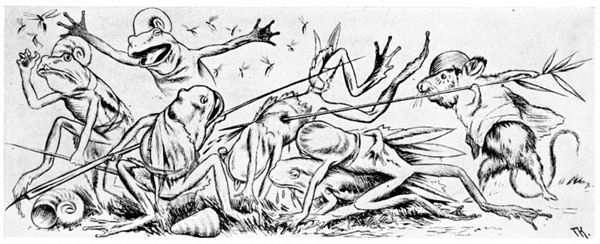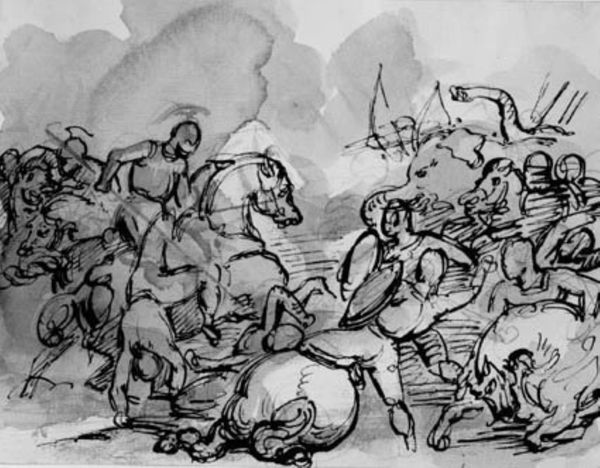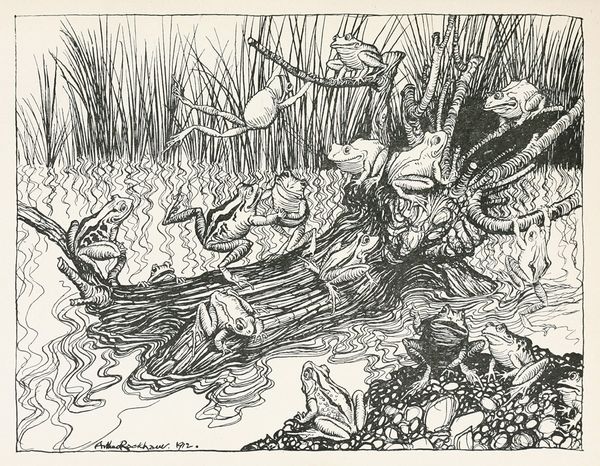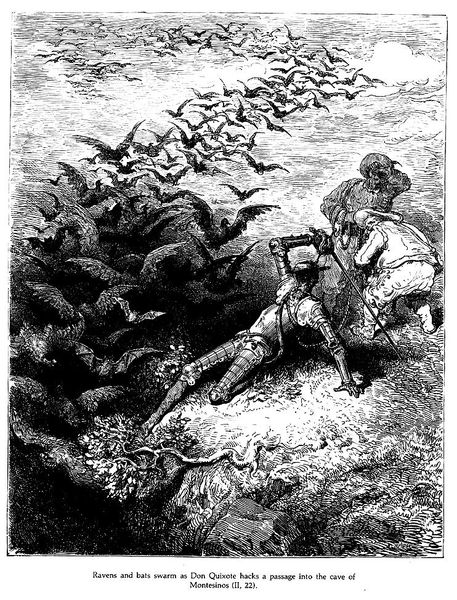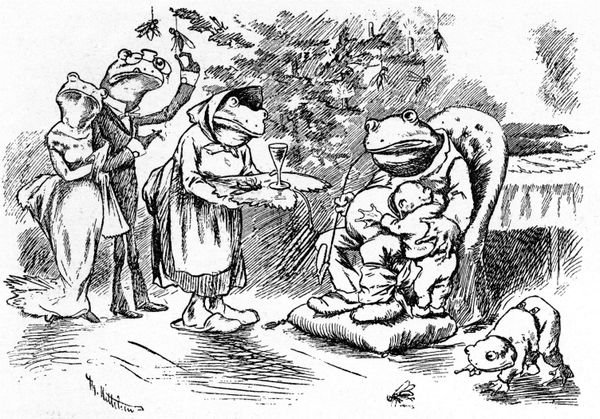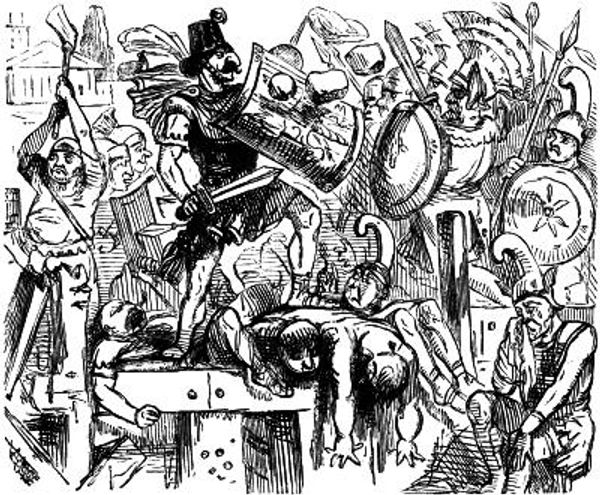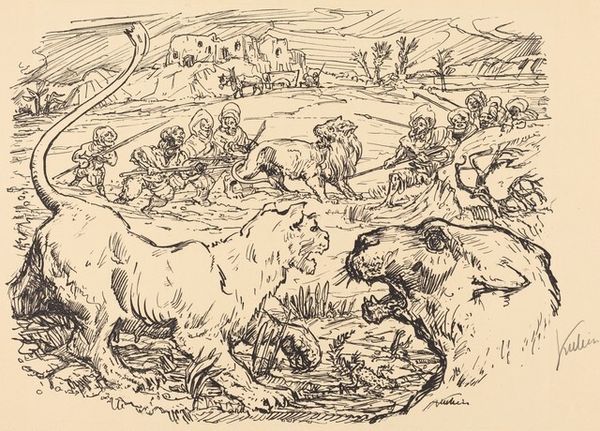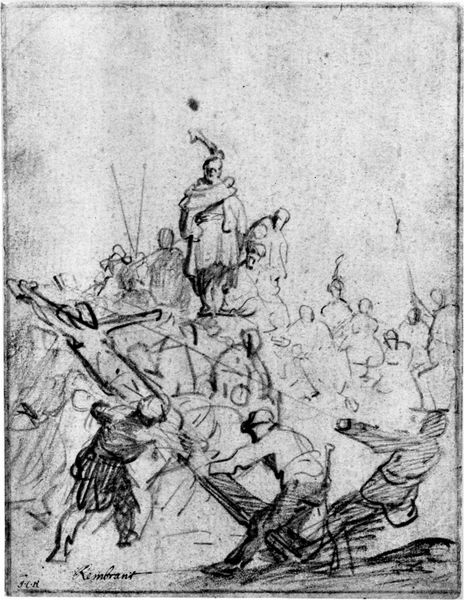
drawing, ink, pen
#
drawing
#
narrative-art
#
pen illustration
#
landscape
#
figuration
#
ink line art
#
ink
#
symbolism
#
pen
Copyright: Public domain
Curator: Theodor Kittelsen's pen and ink drawing, "Krigen Mellom Froskene Og Musene 06," created around 1885, presents a compelling narrative scene. My initial reaction is of whimsical menace—the line work is so delicate, yet the scene itself feels charged with a certain violence. Editor: Absolutely. The contrast between the medium and the subject is striking. You have this incredibly detailed pen illustration, executed with such precise lines, depicting a rather absurd, albeit unsettling, image of mice marching to war against... frogs, I presume, judging by the title. It reads as an absurd and allegorical social commentary, rendered in ink. Curator: Indeed. Kittelsen, a Norwegian artist deeply invested in folklore and national identity, often used animals to represent human follies. Notice the procession of mice warriors, each rendered with individual characteristics, carrying spears, shields—a full panoply of war! There’s a rather poignant satire at play. Editor: And observe how the march is halted, disrupted by this giant snail blocking their path! I see a commentary on the futility of war, or the triviality of its causes. Perhaps it’s reflecting the slow pace of bureaucratic processes. It feels reminiscent of turn-of-the-century anxieties around nationalism and escalating conflicts. Curator: Good point! Also consider the composition—the regimented line of mice against the simplicity of the foreground foliage emphasizes a controlled, almost oppressive sense of order that’s being disrupted by this simple animal. A mirror of class tensions, maybe? Editor: Yes, the snail does serve as an interrupter of the mouse’s march to conflict, but I’m drawn to its vulnerability. The scene creates an unsettling dynamic: an overwhelming power is countered by quiet vulnerability. There's something very political here, a hint of anti-militarism perhaps? It critiques power, while also reflecting on nature. Curator: Perhaps. Though I'd also suggest considering the influence of the emerging print culture at the time. These illustrations were meant for mass consumption and the spread of this very commentary. How might their distribution affect its message to people that are consuming the illustration? Editor: An important point about context, and maybe its broader reach has a certain irony since its critique could easily fall prey to promoting a simplified narrative of power structures it intends to target. It all boils down to challenging simplistic readings of the piece. Curator: Precisely, making one mindful that there's more to Kittelsen's vision than initial readings may suggest. Editor: Leaving me hopeful about the ways that art fosters more layered responses to history's echoes on the modern state.
Comments
No comments
Be the first to comment and join the conversation on the ultimate creative platform.

